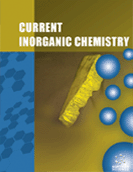Abstract
Background: Recently, the innate capability of nitrate-reducing bacteria (NRB) to oxidize ferrous iron in the presence of nitrate was found to involve the combination of abiotic and biotic reactions. Biogenic nitrite from nitrate respiration reacts with FeIIbearing minerals (here, siderite and vivianite) to produce hydroxycarbonate green rust (GR, FeII4FeIII2(OH)12•CO3) in a first step, as a transient compound, before oxidizing into goethite (α-FeOOH) in a second step. However, the conditions leading to GR formation instead of goethite were not well defined, especially the influence of the nature and the concentration of the organic electron donor.
Results: In this study, the maximum amount of electron equivalents leading to GR was determined by screening the potential of various organic electron donors: glucose, glycerol, methanoate, lactate and trypcase soy medium. FeII-bearing minerals were oxidized to GR when the amount of equivalents of electrons released per mole of organic electron donor was lower than two, whereas goethite was obtained beyond four equivalents of electrons delivered.
Conclusion: A fuzzy limit was defined between these two values of equivalents of electrons released per mole of organic electron donor representing the co-existence of GR and goethite. The sequence of FeII oxidation by NRB was also discussed and compared to that of iron-oxidizing nitrate-reducing bacteria.
Keywords: Electron transfer, layered double hydroxides, nitrite, nitrate-dependent ferrous oxidation, nitrate-reducing bacteria.
 15
15

